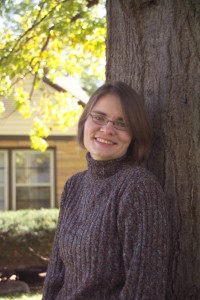by Yelizaveta P. Renfro
The assignment: to write the first chapter of The Great Connecticut Caper, a serialized storybook that would be created by twelve different writers and twelve different illustrators living in Connecticut.
The target audience: children in grades four through seven.
The premise: Gillette Castle is going missing!
The challenge: to create an engaging, fast-paced opening chapter that would introduce sympathetic characters and lay out some basic plot elements. And to do it in under 650 words.
The process: The first step was research. We made a family trip to Gillette Castle in East Haddam where we learned about William Gillette, the eccentric actor who brought Sherlock Holmes to life on the stage and who designed his twenty-four room mansion to resemble the ruin of a medieval castle. We toured the home, looking at hidden passageways and the surveillance system based on strategically placed mirrors, and we wandered the grounds, admiring his personal railroad track as well as his woods and views of the Connecticut River.
 But we weren’t done yet. On another weekend, we took a ride on the Essex Steam Train and the Becky Thatcher Riverboat, learning about the Connecticut River, getting a different vantage point of Gillette Castle from the water, and discovering more about William Gillette.
But we weren’t done yet. On another weekend, we took a ride on the Essex Steam Train and the Becky Thatcher Riverboat, learning about the Connecticut River, getting a different vantage point of Gillette Castle from the water, and discovering more about William Gillette.
As a writer, I often start projects with research. And as a parent, I often take my kids along. But this assignment was different. I am primarily a writer of books for adults, and this project was writing for children. Luckily, I had my own kids to consult.
So after the research stage, I had a long brainstorming session with my fourth grader (with the first grader listening in and offering occasional advice). We discussed what makes a good story and interesting characters. We talked about mystery books for children. We tossed around ideas for the story and possible character names. The fourth grader taught me how to make a character map, and she created several for possible characters. The first grader made one as well.
We agreed early on that the protagonists should be children, and that there should be two of them—a boy and a girl. (We discussed Ron Roy’s and Mary Pope Osborne’s books as examples.) The names and character traits of the boy and girl kept changing, but we finally settled on Thomas and Li-Ming. And during a long walk through our neighborhood, the fourth grader and I discussed different possible openings. Should the protagonists be touring the castle? Should they be on a riverboat cruise? What other characters should be introduced? What should happen at the end of the chapter?
There would be a cliffhanger, we decided, so readers would want to tune in for the following installment. And we needed to create openings for other writers to build the story—characters who could be further developed, situations that could be interpreted in more than one way.
Finally, once we had hashed out everything, I wrote the chapter. The first draft came in at over 900 words. So then I cut, and I cut some more. And finally, when the chapter was just under 650 words, I read it to my kids. They loved it. But they also had a few suggestions. I revised. I read it again.
It was a process of learning together. I shared what I knew about storytelling with my kids, and they shared what they knew with me.
The outcome: See for yourself at http://ctcaper.cthumanities.org where the first chapter was posted on January 4. And please check back every two weeks as more chapters go live. I am looking forward to seeing where the story goes from here. And so are my kids.
Yelizaveta P. Renfro is the author of a collection of essays, Xylotheque, available from the University of New Mexico Press, and a collection of short stories, A Catalogue of Everything in the World, winner of the St. Lawrence Book Award. Her fiction and nonfiction have appeared in Glimmer Train Stories, North American Review, Orion, Colorado Review, Alaska Quarterly Review, South Dakota Review, Witness, Reader’s Digest, Blue Mesa Review, Parcel, Adanna, Fourth River, Bayou Magazine, Untamed Ink, So to Speak, and elsewhere. She holds an MFA in creative writing from George Mason University and a Ph.D. in English from the University of Nebraska. Currently a resident of Connecticut, she’s also lived in California, Virginia, and Nebraska. To learn more about her work, visit her blog at http://chasingsamaras.blogspot.com/p/writing.html.






















Great insights into your process, Yelizaveta. I love how you included your children in the process. I also took mine along when I visited the castle. Thanks so much for being on the blog today!
This reminds me of a game we played as kids, where each person added another sentence to the tale. But we had the disadvantage of only hearing the last sentence from which we had to continue. The joy was to discover how far afield the tale went as it made the rounds.
May you have much joy and better stories ten we had. You know the setting and can see every chapter.
Thanks, Mirka! I’ve played a similar game at family functions. It always made for some interesting stories.
I am certainly going to have to check out this castle one day!! And I loved hearing about the challenge of setting up a story for so many other writers to follow–it sounds tough and exciting.
You should, Anna! Worth the visit…go on a nice day and check out the spectacular grounds, too.
That’s one incredible challenge there, but it sounds like you pulled it off, Yelazaveta! This project sounds amazing!
I agree that she pulled it off, Meradeth! Thanks for popping in. 🙂